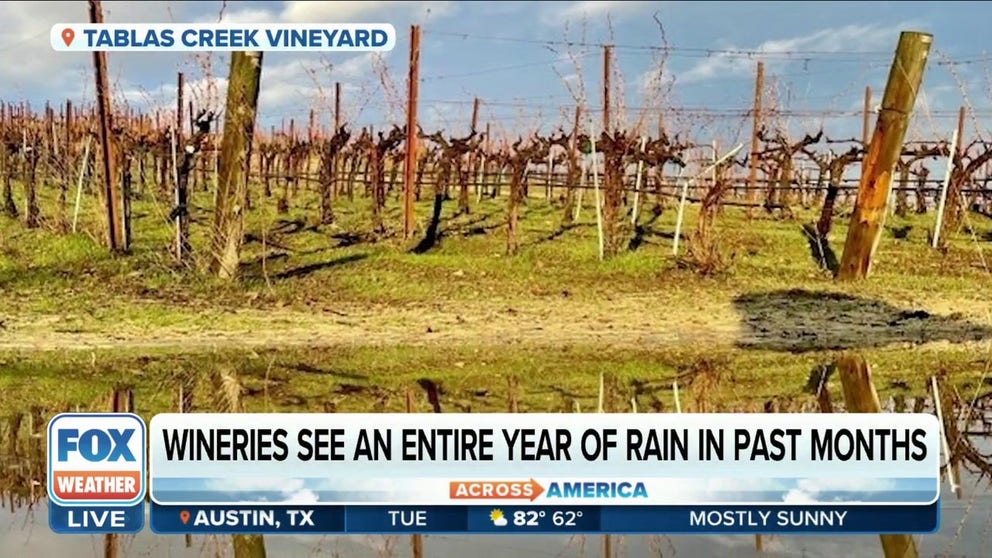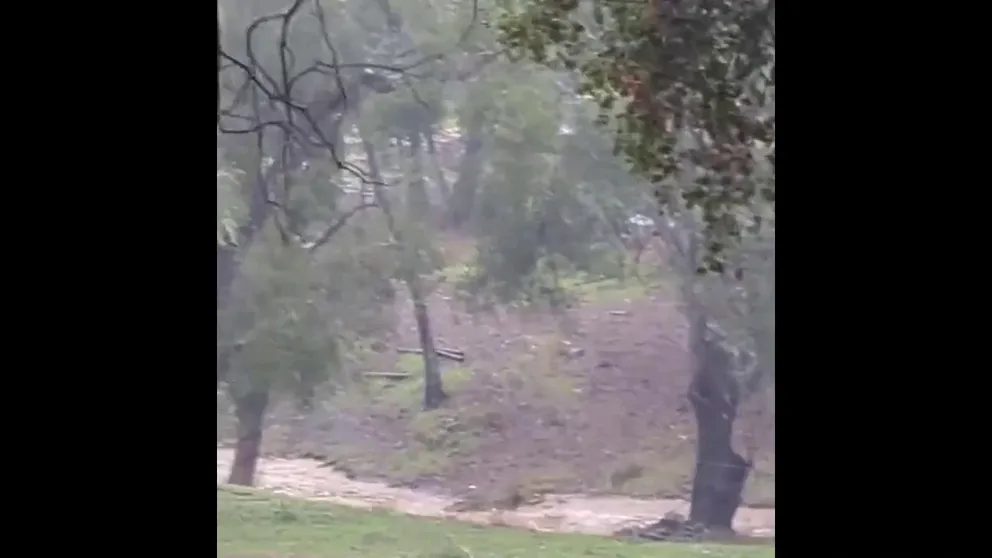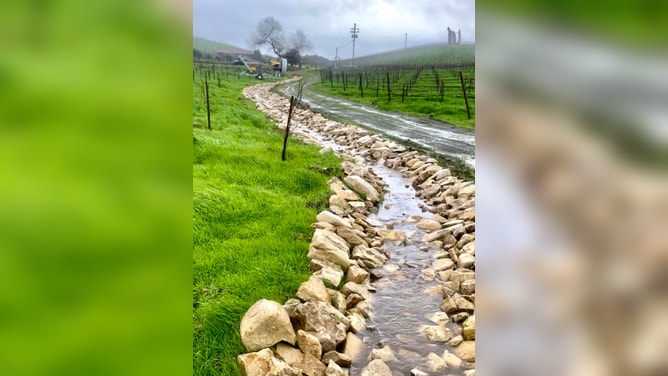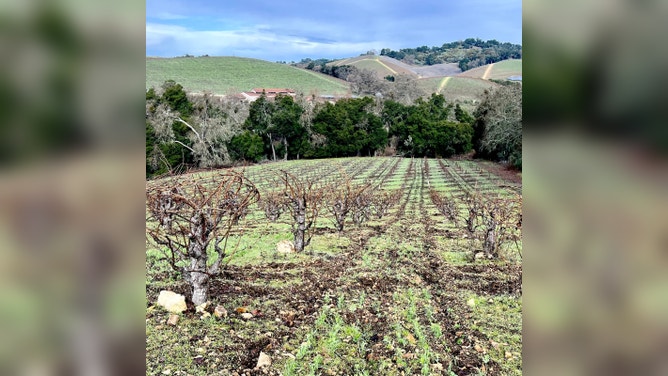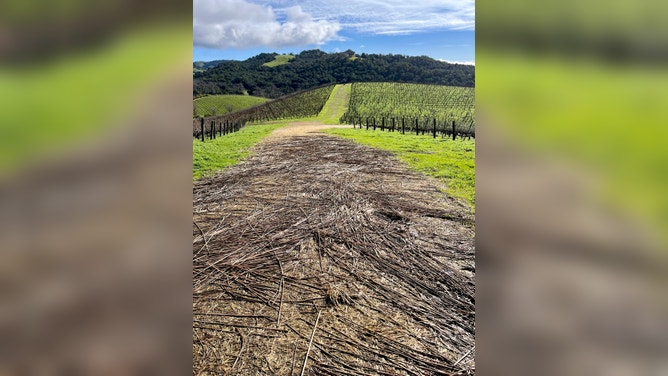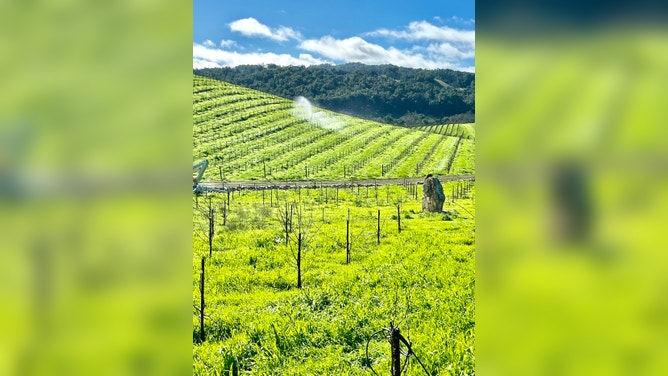California vineyard expects 'bumper' crop this year thanks to atmospheric rivers
While people in California have been hit hard by flooding and landslides caused by this year's atmospheric rivers, one vineyard says the crops are loving the wet weather.
Wineries welcome rounds of rain, find drought relief
File: Last year the proprietor of Tablas Creek Vineyard, Jason Haas says ‘having this rain come’ is a good sign for the upcoming vintage about the parade of atmospheric rivers. Haas and others in the wine industry welcome the wet weather after three dry years.
PASO ROBLES, Calif. – Amid all the tragedy wrought by the series of atmospheric river-fueled storms this winter in the West, there is a silver lining. California's winemakers are expecting a "bumper" crop.
"With the rainfall from last year and the high vigor of the canopy in 2023, we are expecting even bigger yields for 2024," said Jordan Lonborg, Vineyard Manager at Tablas Creek Vineyard. "The rainfall we have received thus far will go a long ways in supporting the crop that will most likely be what we call a ‘bumper’!"

The lush canopy of leaves shading the Grenache grapes from the harsh sun in 2023.
(Tablas Creek Vineyards / FOX Weather)
The winery is in Paso Robles on the Central Coast of California. Tablas Creek's owner, Jason Haas shared his vineyard manager's optimism for the vines but said people have been hit hard.
"That last California storm was a dozy," he wrote in his blog. He said it was "wet, wild and windy" at the vineyard. He posted the video below where the wind can be heard screaming through the vines.
WEATHER'S GUIDE TO WINE COUNTRY: WHERE TO FIND YOUR FAVORITE WINES THANKS TO THE WEATHER
He pointed to Los Angeles getting almost a year's worth of rain in one day. Heavy rain in Santa Barbara triggered evacuations because of landslides in Montecito and added 5 feet of water to the large reservoir nearby. San Luis Obispo County, home of Tablas Creek, even saw two tornadoes – the first time one had been recorded since 2004.
So much of California has been suffering from storm after storm this winter. With every atmospheric river, we see tragic videos of landslides taking down homes, high water rescues of drivers who were narrowly able to climb on top of the car in rising waters and flooded berry and lettuce fields that will certainly take a serious financial hit.
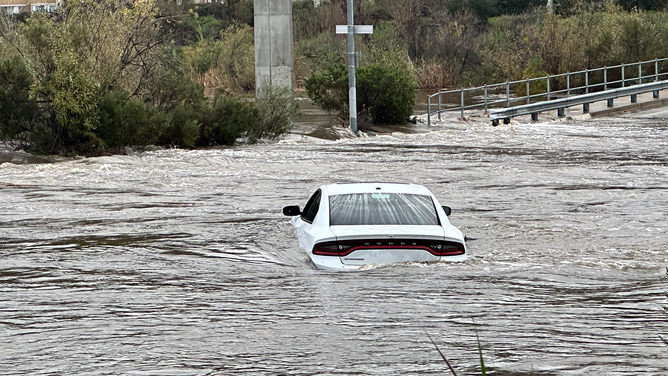
File: A car is seen submerged in water after the San Diego River flooded due to record rain.
(NWS San Diego / FOX Weather)
Most of the rain soaked in, Haas and Lonborg said.
"Rain has been really consistent this year which is ideal," said Lonborg. "Majority of the weather events have brought inches of rain but over the course of multiple days not hours which is ideal in terms of percolation (absorption) into the soil."
The core rainy season for the area is December to March. Tablas Creek collects 78% of its total rainfall in that time.
"As long as we get these periodic smaller storms, that's just fine," Haas added. "We do need it to stay wet in January because it accounts for nearly a quarter of our annual total. If we don't get our moisture, then it's hard to make it up later."
HOW WEATHER CAN IMPACT WINE PRODUCTION

An incoming storm.
(Tablas Creek Vineyards / FOX Weather)
Lessons learned from last year's flooding
The crush of atmospheric rivers last year was a different story.
"What a difference a year makes," Haas wrote. "This week last year (week of February 9) we were in the middle of a three-week stretch where four separate atmospheric river storms slammed into the California Central Coast, totaling nearly 20 inches of rain."
That much rain in just three weeks was more than they received during any of the previous three winters of drought. Haas joined FOX Weather after floodwater and runoff overwhelmed the property.
WHAT DOES ALL THIS RAIN IN CALIFORNIA MEAN FOR THE WINE?
Paso Robles wine country under water
Atmospheric river storms swamped California's Paso Robles wine country. An overflowing creek now runs over Tablas Creek Vineyard's entrance.
CALIFORNIA SCENES SHOWING DEVASTATION FROM FLOODING, SINKHOLES AMID BARRAGE OF ATMOSPHERIC RIVERS
The vineyard made key improvements after that to avoid a repeat. A new drainage channel directs any runoff from the 3 inches of rain in a day. Furrows have been dug between the vines, perpendicular to the water runoff, to slow the stream and allow water to drain through the soil into deeper layers of the roots and eventually the aquifers.
"The capacity of these calcareous soils to absorb water is amazing. And particularly at this time of year, with the cover crops so well established, we hardly ever worry about erosion," wrote Haas. "But it's still a substantial test to get three inches of rain in a day, or six inches in five days. What we're seeing this year is well within historical norms."
NAPA VALLEY 2020: THE LOST VINTAGE TO WILDFIRE SMOKE
The crew also arranged composting piles perpendicular to the runoff, again slowing the flow and promoting absorption. There is also a secondary benefit before the runoff pools in a pond.
"So that water is infused with the nutrients as it flows through: a sort of compost tea on a grand scale," explained Haas. "Once those basins start to fill up, we pump the nutrient and microbe-infused water out and spray it onto our nearby vineyard blocks between rainstorms. This shares all the goodness that's in the compost piles across many acres of the property."
Vines are sleeping
The vines are fine in the heavy rain because they are dormant. The rain actually keeps the soil cooler and pushes back "bud break," when the first buds appear in spring.
"Wet soils have a greater capacity to stay cool compared to drier soils, and rising soil temperatures is one of the most important factors in determining the date of bud break," wrote Haas. "Rain well into March last year helped keep our vines dormant longer than we've seen in any of our drier seasons, and every week that the vines stay dormant through March and April measurably reduces our risk from spring frosts."
Lonborg said he expects bud break in about four weeks, a month ahead of last year, which is normal.
WEATHER HAS NAPA WINEMAKERS WALKING FINE LINE BETWEEN SPECTACULAR VINTAGE AND ROT WITH LATE HARVEST
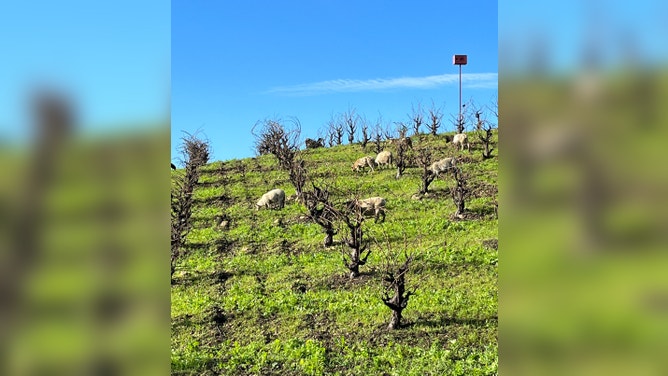
The sheep keep the cover crop under control in the vineyards.
(Tablas Creek Vineyards / FOX Weather)
Temperatures through most of the winter have been mild. Between the rain and the mild weather, the cover crop in the vineyards is lush and established itself early. The cover crops add nutrients to the soil, prevent erosion and are plowed under as compost in the spring. Tablas Creek said the sheep have been very happy with the cover this year. The sheep fertilize the ground, too.
